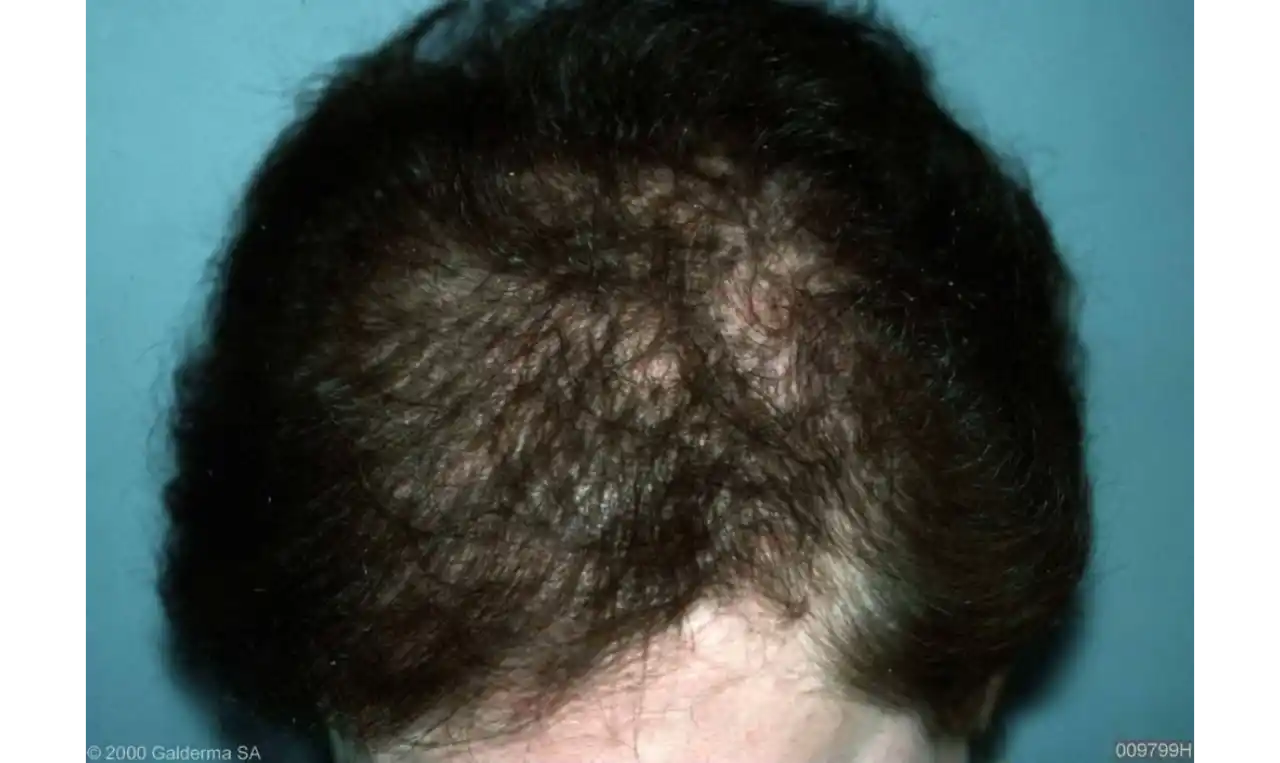
What is Alopecia (hair loss) ?
Partial or complete loss of hair is called alopecia. Hair loss usually develops gradually and may be patchy or diffuse (all over). One loses up to 100 hair from the scalp everyday.
Baldness is not usually caused by disease. It is also related to aging, heredity or changes in the hormones. There can be male pattern baldness or female pattern baldness.
Alopecia (hair loss) Causes
Hair Disorders
- Hereditary thinning or baldness: It is also called androgenetic alopecia. It is regarded as the most common cause of hair loss. Hereditary hair loss in men is seen as a receding hairline as well as hair loss on top of the scalp. Women, on the other hand, tends to have their hairline and have visible thinning of hair over the front and top of the scalp.
-
Alopecia areata. It is an autoimmune disease that
causes hair loss on the scalp and elsewhere on the body. It develops in
people of all ages and hair is lost in patches
- Cicatricial (scarring) alopecia: It can develop in otherwise healthy men and women, cicatricial alopecia is a rare condition that destroys hair follicles. Scar tissue forms where the follicles once were and re-growth is not possible. Treatment attempts to stop the inflammation that destroys the hair follicles.
Disease
-
Underlying medical condition: Decreasing hair loss is
regarded as warning sign for about 30 diseases. Hair loss often can be
stopped or reversed with treatment for the underlying disease. Medical
conditions that lead to hair loss are thyroid disease and anaemia caused
by an iron deficiency.
-
Some cancer treatments: Radiation therapy and some
chemotherapeutic medications can also cause hair loss. While hair loss
is usually temporary, it can be the most distressing part of therapy.
-
Ringworm of the scalp. Hair loss can also be caused
due to fungal infection, which is most common in children, can cause
balding and scaling on the scalp.
- Trichotillomania. It is a disorder that causes people to repeatedly pull out their own hair. Aside from a constant urge to pull out the hair on the scalp, sufferers often say they feel compelled to pull out their eyelashes, nose hair, eyebrows, and other hair on their bodies.
Stress and Hormones
-
Stress: Hair loss can also occur if a person is
mentally or physically stressed, or after a major surgery, high fever,
severe infection, or even flu.
- Hormone fluctuations: Any change in hormonal levels can cause hair loss especially in women. Hair loss is common during menopause and after childbirth due to falling oestrogen levels. When hair loss is caused by falling oestrogen levels, the loss is usually temporary. Hair can be re grown .
Diet
-
Weight loss: People having weight issues can also
have hair loss. This hair loss is common, and hair growth does return to
normal with proper diet and weight.
- Vitamin A excess: Intake of too much vitamin A through vitamin supplements or medications can also lead to hair loss.
- Protein intake too low: Hair loss can also occur when the body is not getting enough protein, it conserves the protein. It does get by shifting hair growth into the resting phase. Within 2 to 3 months, the person usually sees visible hair loss. This can be reversed and prevented by eating enough protein.
-
Iron intake too low. Consuming too little iron can
lead to hair loss. Good vegetarian sources of iron are iron-fortified
cereals, soybeans, pumpkin seeds, white beans, lentils, and spinach.
Clams, oysters, and organ meats top the list of good animal sources of
iron.
- Eating disorder. An eating disorder such as anorexia or bulimia is the other cause of hair loss.
Medication
Medications that can cause hair loss include:
- Blood thinners
- High-dose vitamin A
- Medicines for arthritis, depression, gout, heart problems, and high blood pressure
- Birth control pills: Some women taking or discontinuing birth control pills experience hair loss. This usually occurs in women with an inherited tendency toward hair thinning.
Hair Care Practices
-
Hair cosmetics: Frequent Coloring of hair can cause
the hair to break. Regular or improper use of dyes, gels, relaxers, and
sprays also can cause hair breakage. Dermatologists recommend limiting
use of these hair cosmetics to reduce hair breakage.
- Blow dryers, flat irons, and similar devices. Regular use of a blow dryer tends to damage hair. The high heat from a blow dryer can boil the water in the hair shaft leaving the hair brittle and prone to breakage. Allowing the hair to air dry and styling it only when dry will lessen this risk. Dermatologists also recommend limiting the use of flat irons, which straighten hair by using high heat, and other devices such as curling irons.
- Hairpins, clips, and rubber bands: If hair are held tightly with hairpins, clips, and rubber bands, it can break hair. To minimize hair breakage, one should use loosely fitting clips and wear them in different areas of the scalp so that hair breakage is not localized in a specific area.
- Too much or vigorous grooming: Regular shampooing, combing, or brushing (100 strokes or more a day) or doing any of these too vigorously can cause hair breakage. When hair breakage occurs, the hair appears shaggy or too thin.
Alopecia (hair loss) Diagnosis
- Dermatologists can diagnose hair loss by asking questions about medical history, family history. A dermatologist may also carefully look at the scalp to know the condition of scalp.
